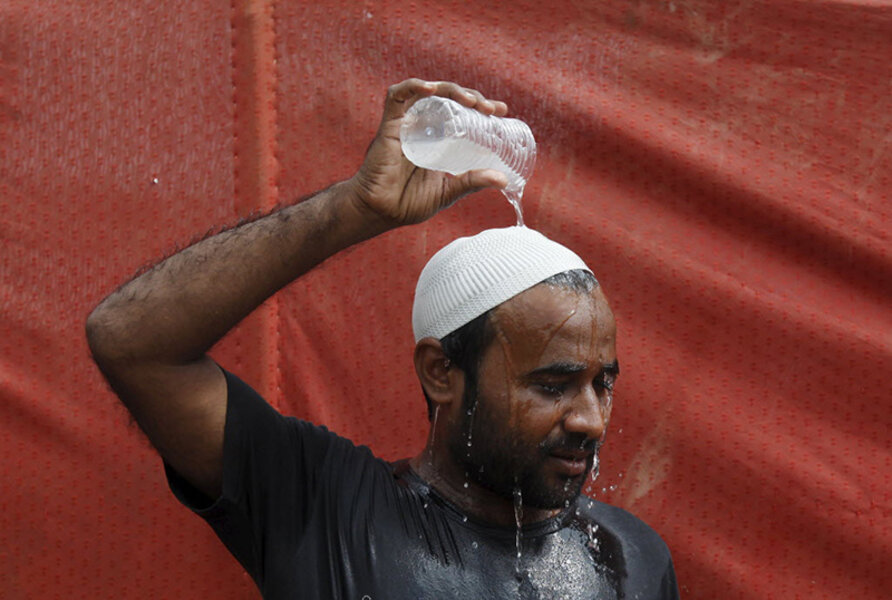How Pakistan and India can prevent future heat wave fatalities
Loading...
Heat waves in the past two months have killed a combined 3,000 citizens in India and Pakistan.
Is there anything the two countries could have done to minimize the harm?
“You don’t necessarily need a complicated solution,” Anjali Jaiswal, director of the India program at the Natural Resources Defense Council, an environmental group, told Mashable.
In both countries, residents complained about the lack of a reliable power supply and said that the government could have prevented deaths by investing in the electrical infrastructure.
But Rajita Kurup, Oxfam India’s food and climate change program coordinator, said most casualties were poor migrants who couldn’t afford air conditioners.
Electric companies worldwide experience the highest demand during heat waves, as customers crank up air conditioners and fans to try to stay cool. But an overtaxed and aging electrical grid in Pakistan struggles to keep up with demand during normal temperatures. When heat waves hit, blackouts are common.
Dawn, a national Pakistani newspaper, reported the energy crisis put hospital patients at risk. Dr. Khalid Masood, medical superintendent of a government-run hospital in Karachi, said the mortalities at the hospital would have doubled if they didn’t have a back-up generator.
He noted prevention steps are simple: drinking oral rehydration salts and covering the head with a wet cloth.
In response to heat waves, the local government in Ahmedabad, the largest city in the north Indian state of Gujarat, created a four-fold approach following a 2010 heat wave that led to 1,344 deaths in the region alone.
Their plan, Mashable reported, includes educating the public about potential heat-related illnesses and preventative measures, initiating an early warning system, training medical staff, and promoting adaptive measures.
Jaiswal noted Ahmedabad’s Sherdaben General Hospital, which serves the slum community, offered low-tech, low-cost solutions that probably saved many lives this past month.
For example, the hospital replaced their black, heat-absorbing tar roof with a white roof and switched out their neonatal ward from the highest floor – exposed to the greatest sunlight – to a lower floor.
ABC news reported local authorities in Ahmedabad had also mapped areas with high-risk populations to create an action plan, built up public awareness and set up cooling spaces in temples and public buildings.
The Pakistani newspaper, Dawn, also reported that local doctors said there could have been fewer casualties in Pakistan with the correct procedures in place. “Unfortunately, we didn’t have a timely weather forecast that could serve as a warning to the people. Then, the civic administration couldn’t take swift notice of the emerging situation. People should have been asked to stay indoors and keep themselves hydrated,” said Dr. Saeed Qureshi, medical superintendent of the Civil Hospital Karachi.
In the past day, the Pakistani heat wave eased. But earlier in the week, temperatures reached as high as 116.6 degrees F. in India and 112.6 degrees F. in Pakistan.
India’s typical summers entail temperatures close to 105 degrees F. and in parts of Pakistan’s, they hover around 95 degrees F..





